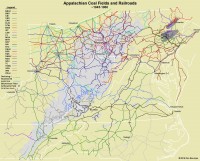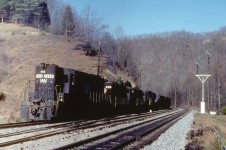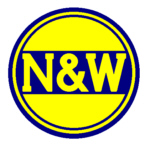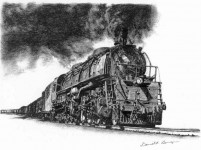Evolution of Appalachian Railroads 1945-2005

The evolution of coal-hauling railroads in the Appalachians is fascinating, especially over the last 60 years. Six years ago, Appalachian Railroad Modeling published its first map of the coal fields and railroads circa 1950. While it was informative, these four maps go well beyond the original to show how Appalachian railroading changed over time, and together they tell a fascinating story of growth, downsizing, consolidating and rebirth. Based on the resources I had, it was difficult to tell when certain lines were abandoned, especially in the 1945 and 1970 maps, so many of the dashed lines in the 1945 map may have been active, and many of the dashed lines in the 1970 map may have been abandoned decades before. I learned … Read more





 The N&W used train symbols to identify its trains. Train symbols are different from train numbers. Train numbers are used to designate scheduled trains (those who’s authority to occupy the main track between stations is listed in the Division Employees Timetable). Train symbols, on the other hand carry no timetable authority and do not authorize a train or engine to occupy the main track between stations. Train symbols, at least on the N&W, pretty much reflected the initial and final terminal of the train or perhaps the primary type of traffic handled on that train. For instance, the train …
The N&W used train symbols to identify its trains. Train symbols are different from train numbers. Train numbers are used to designate scheduled trains (those who’s authority to occupy the main track between stations is listed in the Division Employees Timetable). Train symbols, on the other hand carry no timetable authority and do not authorize a train or engine to occupy the main track between stations. Train symbols, at least on the N&W, pretty much reflected the initial and final terminal of the train or perhaps the primary type of traffic handled on that train. For instance, the train … 
 The CRR used pushers and double-headed trains in the post war steam era as train tonnage increased. However, evidence of steam era pushers does not seem nearly as easy to find as in the diesel era. When Steam Ran the Clinchfield by James Goforth has several photos of double-headed trains, including merchandise trains. In Goforth’s book, the most dramatic evidence of pusher service is a photograph on page 100 of a southbound coal train with L-1 Mallet No.706 as pusher. The train had stopped to take on water at Boone, TN early in the afternoon of June 1, 1947. Class E-1 4-6-6-4 No. 656 shoved from the …
The CRR used pushers and double-headed trains in the post war steam era as train tonnage increased. However, evidence of steam era pushers does not seem nearly as easy to find as in the diesel era. When Steam Ran the Clinchfield by James Goforth has several photos of double-headed trains, including merchandise trains. In Goforth’s book, the most dramatic evidence of pusher service is a photograph on page 100 of a southbound coal train with L-1 Mallet No.706 as pusher. The train had stopped to take on water at Boone, TN early in the afternoon of June 1, 1947. Class E-1 4-6-6-4 No. 656 shoved from the … 